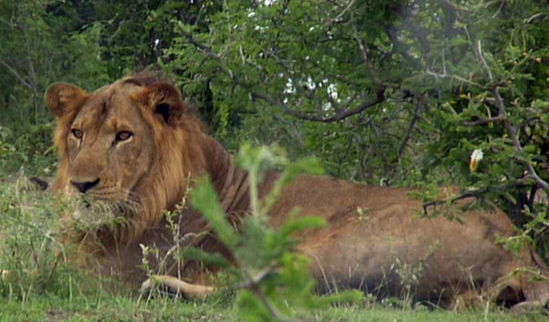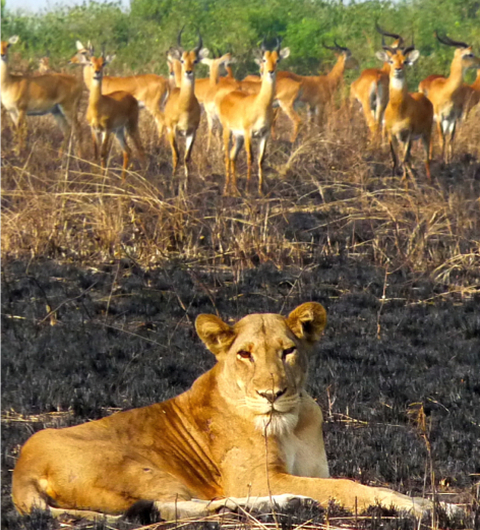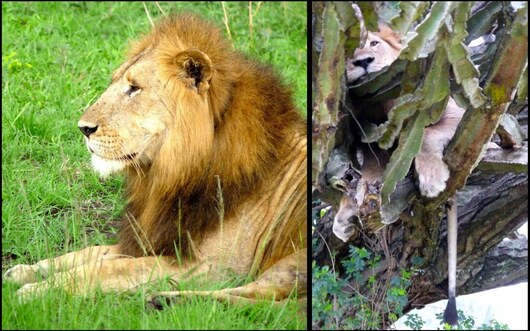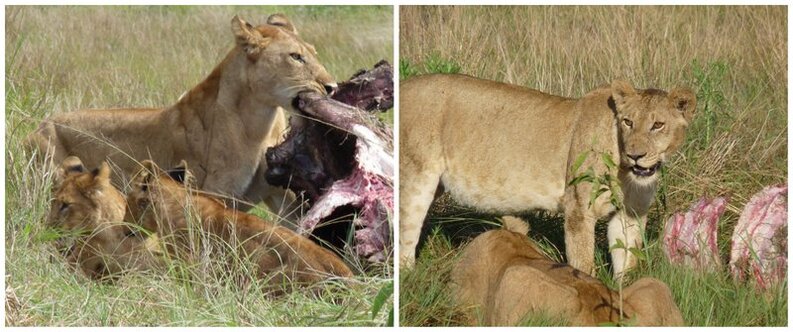US
It’s highly likely that when most people think of the African lion (Panthera leo), they imagine the endless Serengeti plains of Tanzania, or the Born Free story of Elsa the lioness in wildlife-rich Kenya. Tourists also flock to South Africa, Namibia, Zambia, and Zimbabwe to see one of Africa’s most iconic creatures.
Uganda, the Pearl of Africa, is also home to the lion. Though smaller in number than those in neighboring Kenya and Tanzania, Uganda’s lions remain an important species that help maintain the ecological balance of the protected areas they inhabit. National Parks like Queen Elizabeth, Murchison Falls, and Kidepo Valley need lions as top carnivores, an integral part of the food web. They also bring in much-needed revenue from visiting tourists who yearn to see and photograph a lion in the wild.
Queen Elizabeth National Park in Western Uganda is home to a modest population of lions that are critical for the ecosystem within the greater Albertine Rift. This includes migratory corridors between the national park and the Virunga region of neighboring Democratic Republic of Congo.
Unfortunately, and despite being listed as a lion stronghold, lions in this region are under considerable pressure, primarily from human-carnivore conflict. This includes a loss of prey to commercial bushmeat poaching, wire snaring, and poisoning. Lions are often seen as a threat by local farmers with domestic livestock, especially since lions sometimes prey on cattle, goats, and sheep. This sometimes leads to retaliation by local people, who are understandably upset that they have lost a precious source of income. When meat is laced with poison, entire prides can be wiped out, not to mention other species like hyenas and vultures that come to prey on the tainted carcass.

The Coalition of Three
Omukama, Papa, and Rudi are a coalition of three strong males who traveled 120km from the southern Ishasha area of the park in 2009. This required them to swim across the hippo and crocodile-filled Kazinga channel before they reached their new home in Kasenyi. As territorial males, they controlled the entire northern sector of the park.
Each have different personalities. Omukama scared away tourists who came too close. Rudi is the protective one. Papa is the relaxed one. Their preferred prey is buffalo.
While their genetic diversity has been good for the lion population in this area of the park, they displaced other males, who were either too old or too young to stand their ground. These other males were forced closer to the edges of the park, where they are at risk of conflict with humans. Such an ongoing issue is a challenge that UCP works with local communities to resolve.

The Cabral
As a young male lion, Cabral largely moved on his own now as he explored where best to settle down. A very vocal lion at night, Cabral was much shier during the day. When the coalition of three male lions patrolled the peninsula area, Cabral disappeared. However, high human density in and around the park means there are limited areas where he can go without encountering conflict with humans.

Bridget
Bridget is a superb hunter, successfully taking on buffalo, which she may have learned how to do from the coalition of three. She would sometimes join up with her mother, adult daughters, and their offspring, resulting in one of the park’s largest pride of around 12 lions. Bridget was very approachable, so tourists often saw her peacefully resting during the heat of the day. However, this can expose more relaxed lions to aggressive tourism, which is something we educate the tour operators to be more careful about. While it’s understandable to want to get close to these iconic creatures, it is best to give them the space they need in order to successfully hunt, move about, raise their young, and rest after feeding.

Nubi
Nubi is a relaxed, approachable male who loves to spend his days in trees. He is often near Fiona, and her cubs were sometimes seen resting in the same tree with him, even though he may not have been their father. Nubi lived in the Crater area of the park, an area that experiences a great deal of human-carnivore conflict.

Anna
Anna’s pride was a group of about eight lionesses and three cubs. Frequently seen on the Kasenyi game drive route, they were observed covering the entire area of the kob breeding grounds (map), and would sometimes come dangerously close to the village of Hamukungu, which was mentioned in a November 2011 article in National Geographic. We have monitored the pride’s movements while alerting villagers to their presence when we can.
